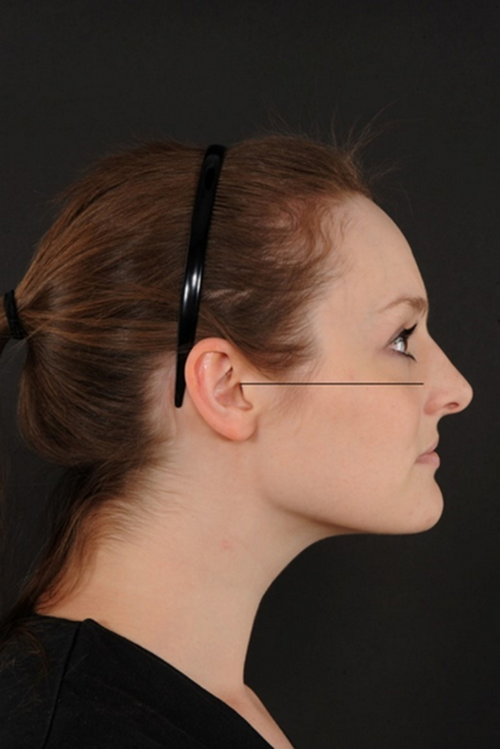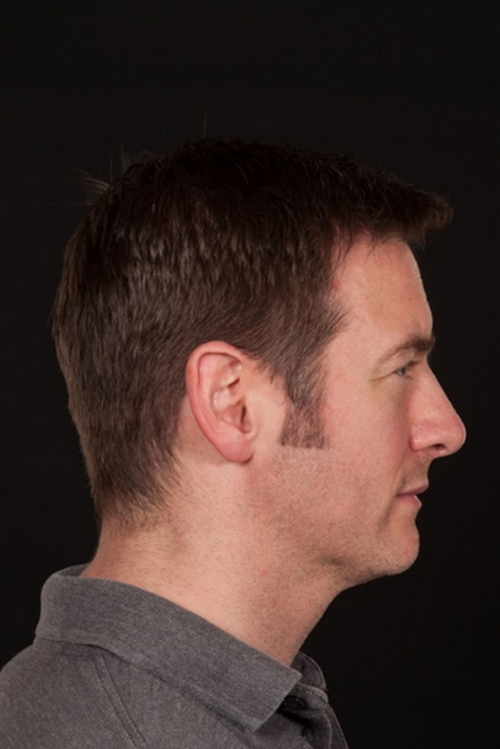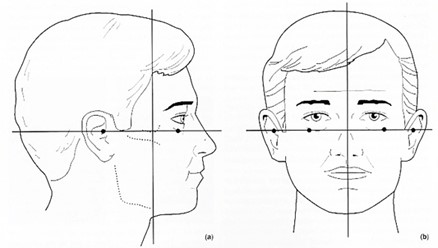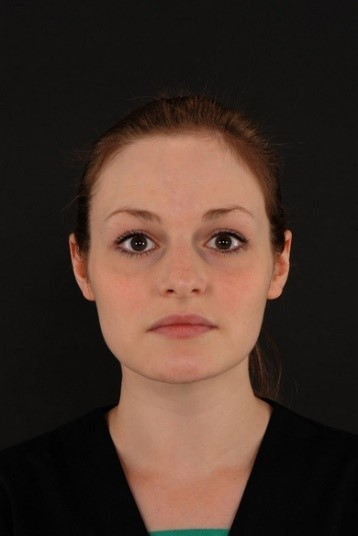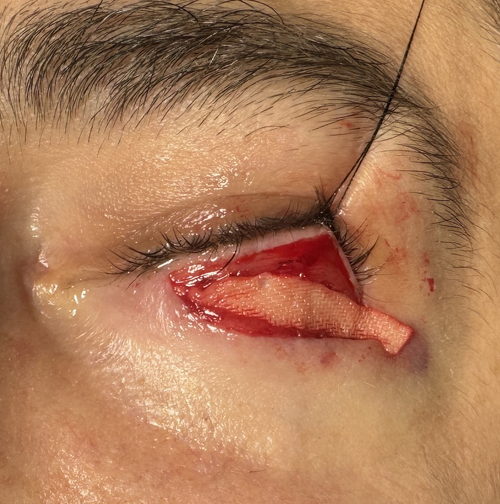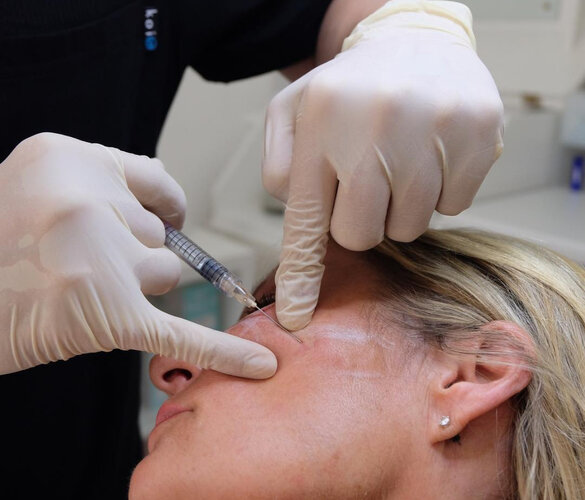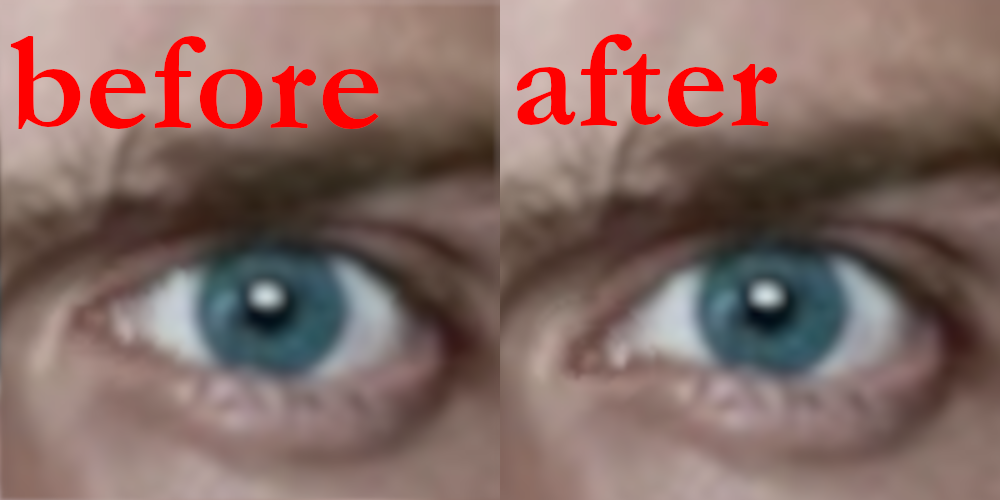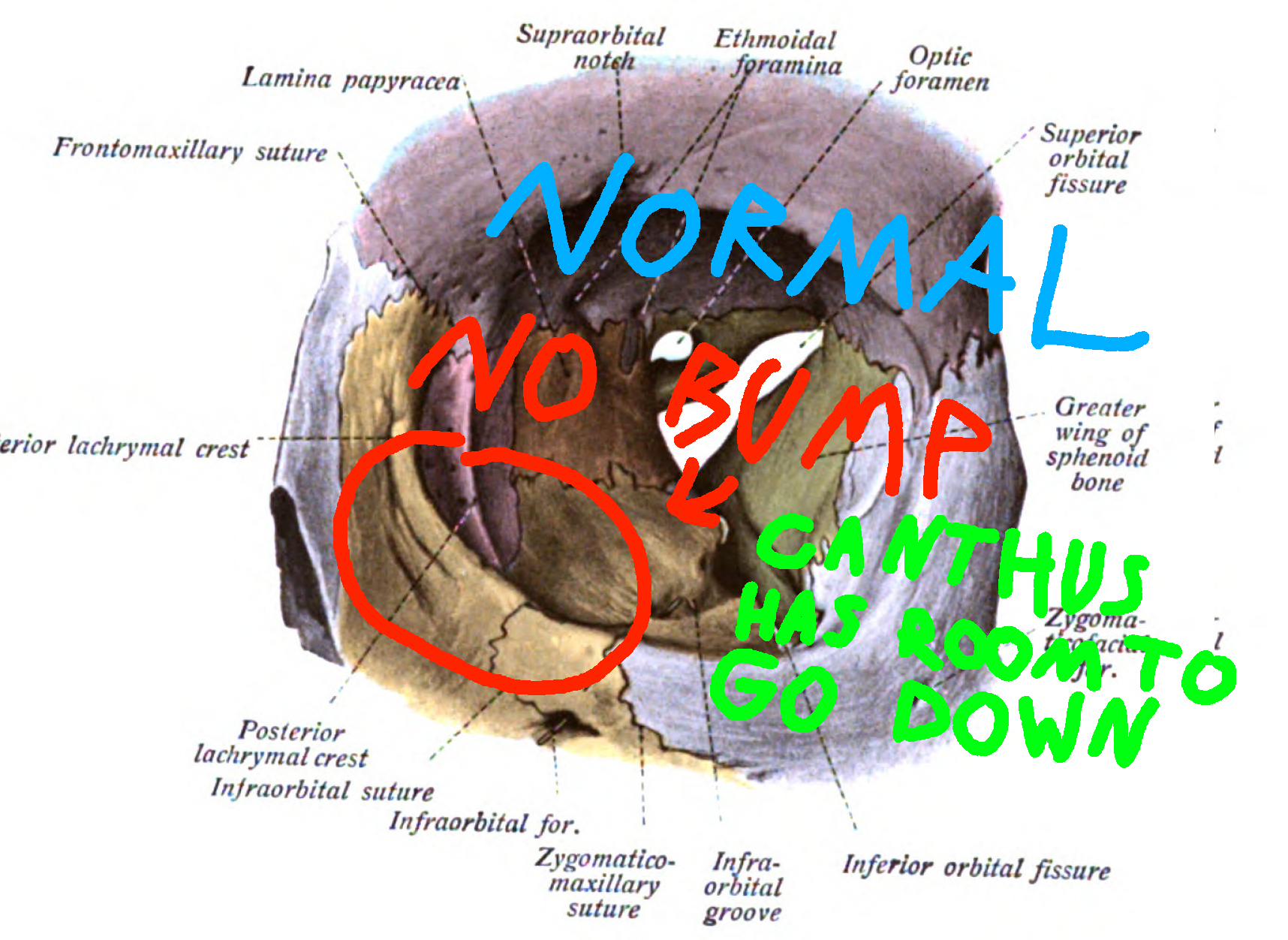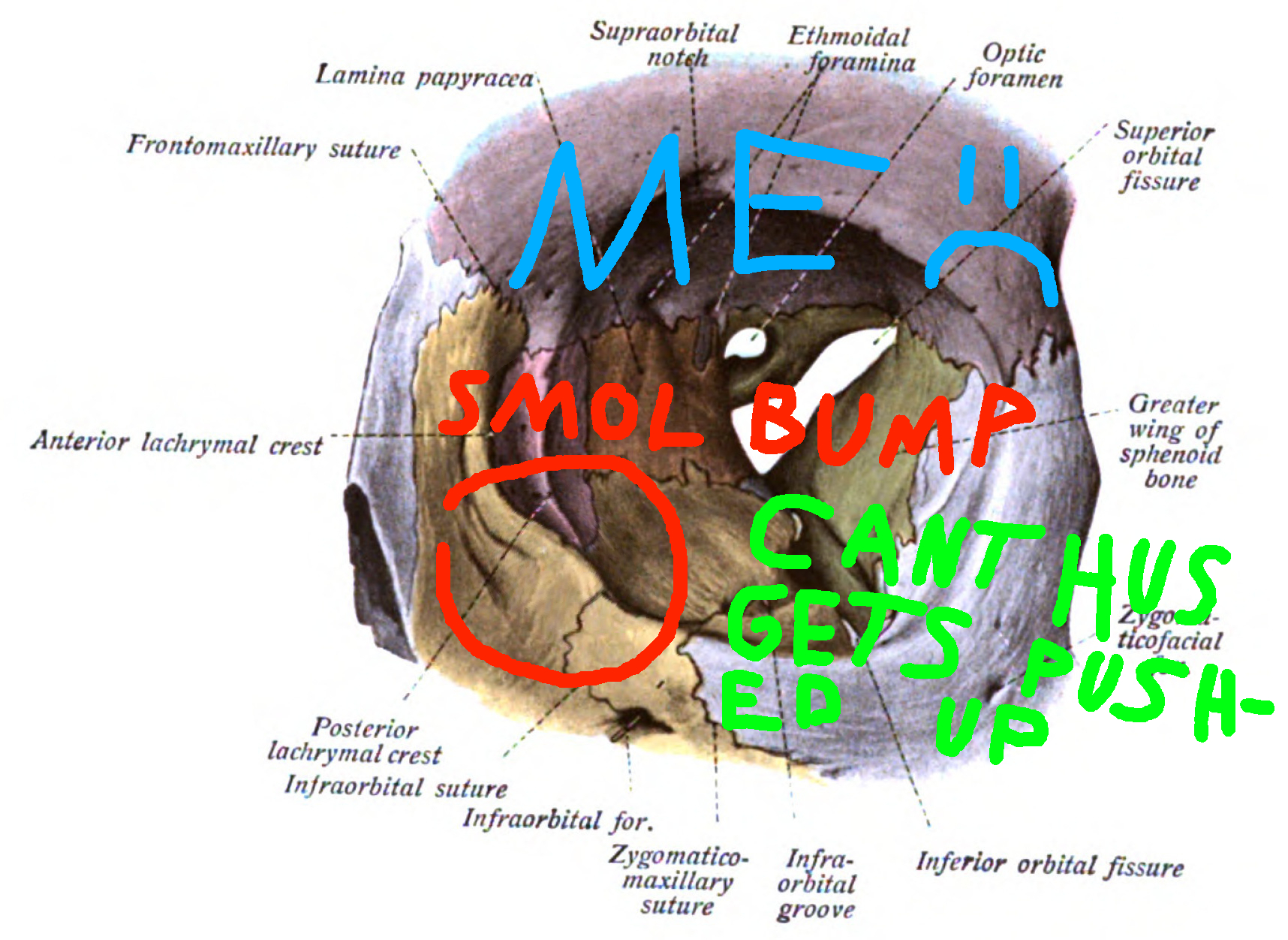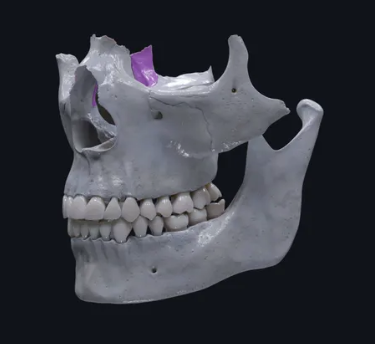imontheloose

Life is death
- Joined
- Nov 27, 2024
- Posts
- 11,512
- Reputation
- 29,629
You're on an incel forum, you need cosmetic surgery; lots of it. Many of you will be needing canthal support in particular. Fret not, Chuddha's eternal guidance is precisely what you've been longing for. Sit down and absorb, young one. Coming to the monastery on time was step one on your journey and the necessary spark in the engine.
Oh dear Chuddha, what is it exactly that we are trying to support?

Figure 1: frontal eye anatomy
May you now consult Figure 1, students. What we want to do to your subhuman eyes is elevate and tighten the lateral lower lid, reduce (or, ideally, erase entirely) the inferior scleral show, refine the canthal tilt, and importantly, stabilise the lid post-midface/IO work. Sounds like a lot, but you've got a hell of a lot worse you need doing, so you best strap up, son. There is a universal cosmetic standard we are after, but there are varying methods to it depending on the deformities you have. Chuddha will assist you on progressing from "what you see" → "what to do".
Understood, mighty soul, but when should we pick each tool? I'm deformed and giga-retarded.
I know you are, son. Fear not, Chuddha shall provide you a format of which each issue will be addressed: core problem(s) → primary tool → typical add-ons.
You shouldn't worry about this an awful lot since your surgeon will formally assess lid laxity, retraction, and vector in clinic, but that doesn't mean it is pedantry to know now, plus I know you want to mentally masturbate about what surgery you wish you could afford; I get it. Well, look no further, lost one, I shall provide you a screening/guesstimation you can do upon yourself to figure out partially what is wrong with you apart from your autism.
Hold your horses, before looking at that frauded photo of yourself you can just about stomach, I need you to man up, look at that subhuman face of yours and accept you're going to have to stare at it pretty intently for a moment. Standardisation will always prevent bad calls: a tiny head-pitch change can fraud your scleral show and canthal tilt very easily, so let's keep you far away from fixing a posture artefact with permanent surgery. A brief piece of history: in the late nineteenth century, German anthropologists came together and agreed on a common method to measure peoples' skulls and they named it the Frankfurt horizontal. This convention was formalised in Frankfurt, hence the name, and was defined as "that plane which is determined by two straight lines (one on either side of the skull), connecting the lowest points on the inferior margins of the orbits with the points of the upper margins of the bony auditory meatus (porion) situated vertically above their centres". See Figure 2.
I know you're a bit special, so to put it simply, it's a line from upper ear canal / tragion to orbitale, parallel to the floor. Although a 105mm focal length (~4.5x on modern phone lenses standing about 2.5-3m away) is ideal to best minimise perspective distortion, 2x/3x is fine if you stand closer (~1.5-2m). Now the fun part, select your desired zoom and place the camera lens at borderline eye height, level with the Frankfurt horizontal. Keep the camera square to the face, i.e. no tilt, under neutral lighting, and use a timer or a fellow subhuman to shoot. You can always crop the image later; don't step closer. Try aim for vertex-to-menton to fill ~80% of image height. This doesn't need to be done to the perfect degree or centimetre, but aiming to achieve a standardised frontal and lateral image of yourself like that of Figure 2 will be incredibly useful beyond just this thread and should be used whenever you ask a more knowledgeable inkwell for a rating or surgery recommendation.
My holy leader, I have my photos, now how do I actually know what I'm suffering from so I can match it to your divinely inspired table?
Well, my ill-featured son, you should first note that these signs often co-exist and hence certainly aren't mutually exclusive, so don't be alarmed if and when you have more than one issue.
If the lateral/external canthus appears rounded/blunted usually with an enlarged, yet dull lateral scleral triangle, you're suffering from significant horizontal laxity / lateral rounding. Rounding is almost always caused by laxity itself: it lets the angle splay and appear round; the only times I've saw this not to be the case is when someone is suffering from prior trauma, surgery, or tendon dehiscence, none of which you will have. See subhuman one in Figure 3.

Figure 3: subhuman troon with brutal lateral rounding
I can already see the replies wanting to see a true -ve vector, so I'll show you one. See subhuman two in Figure 4. This chink has deathly bulging eyes; she looks like a mosquito; she also has disgraceful rims and overall malar prominence hence her -ve vector. Both the globe prominence and flat rims can and will contribute to a -ve vector, it isn't necessarily either or.

Figure 4: noodlemaxed gook with looksmax.org-level IOs
Mild laxity is subtler than the prior two patterns: there's no true lateral rounding and no vertical retraction. Central lid height is normal; the lateral lid just reads a bit loose with tone loss. In this scenario, as listed earlier, the right move is a simple canthopexy which, in short, restores the snug apposition and provides a small uptick in tilt without changing eye length or corner geometry. Granny will be our example in Figure 5 below.

Figure 5: B/A going from laterally loose to snugger apposition via canthopexy w/
corner geometry preserved
Beloved Chuddha, sculptor of symmetry and serenity alike, please, illuminate for us the hidden sutures of your wisdom!
Peace, my child. The path of le beauty is steep, but worry not, Chuddha aids all who reach out with trembling forceps of faith.

Canthopexy is simply just a suture suspension at the end of the day. Through a small lateral incision, they expose the lateral rim periosteum at/just inside Whitnall's tubercle, as seen in Figure 6. They then pass a non-absorbable suture through the lateral tarsus/canthal tendon, and anchor it to the rim periosteum, set tension, confirm apposition, and close.

Figure 6: orbital structure w/o soft-tissue, Whitnall's tubercle labelled
The aesthetic effect is pretty mild: a subtle lift and tighter lateral lid without altering the canthal angle shape. Recovery is quick, swelling will resolve within a week or two, and the longest wait will be for the corner to perfectly set, and even that will only be a month or two off the table. Think of canthopexy as supportive, not shape-changing.
Figure 7: canthopexy animation
Lateral canthoplasty, however, is done through a small lateral canthal incision, the lower lid is released (canthotomy with inferior cantholysis), the lateral tarsus is converted into a short, bevelled tarsal strip, i.e., actual shortening, and that strip is advanced and fixed to the lateral rim at/just inside Whitnall's tubercle (recall canthopexy) with a non-absorbable suture, ideally via a drill-hole for stronger, longer-term hold, using a sort of PS vector. The lateral grey line is very precisely reformed to give a sort of V angle, preserving a small lateral scleral triangle and improving le PFL whilst tightening horizontal laxity; this is a reconstructive, shape-changing surgery, unlike canthopexy. Bloating/swelling will go in a month at most, the angle will set in a similar time frame to canthopexy, perhaps three months.
Figure 8: canthoplasty animation (in the case of entropion)
A spacer graft will be performed when there's a true central height deficit (MRD2 high / excessive inferior scleral show) without a -ve IO vector rather than simple laxity. The fix is done by a thin spacer to lengthen the posterior lamella. Via a transconj. (or conservative subciliary) approach, the surgeon will release the lower-lid retractors, place a .3-.5mm beveled graft between the tarsus and retractors, secure it, then retension with canthoplasty to set the corner.
My dear children, you now have an actionable plan beyond theory collecting. Chuddha has enlightened you all with his divine intellect. No need to panic anymore about getting an overdone tilt or given unnecessary treatments. You may now return to stimming and continuing to worship the almighty under now good, even lighting. And with that, Chuddha achieves 10,000 posts.

Oh dear Chuddha, what is it exactly that we are trying to support?

Figure 1: frontal eye anatomy
May you now consult Figure 1, students. What we want to do to your subhuman eyes is elevate and tighten the lateral lower lid, reduce (or, ideally, erase entirely) the inferior scleral show, refine the canthal tilt, and importantly, stabilise the lid post-midface/IO work. Sounds like a lot, but you've got a hell of a lot worse you need doing, so you best strap up, son. There is a universal cosmetic standard we are after, but there are varying methods to it depending on the deformities you have. Chuddha will assist you on progressing from "what you see" → "what to do".
Understood, mighty soul, but when should we pick each tool? I'm deformed and giga-retarded.
I know you are, son. Fear not, Chuddha shall provide you a format of which each issue will be addressed: core problem(s) → primary tool → typical add-ons.
- mild lateral laxity / prophylaxis for midface or IO implants → lateral canthopexy → (+) orbicularis hitch if dynamic laxity.
- moderate lateral laxity (lower lid is too long/loose laterally) or lateral rounding / early ectropion → tarsal-strip canthoplasty → (+) drill-hole fixation if periosteum is weak.
- vertical lower-lid retraction (inferior scleral show) → spacer graft (usually from thin HPM/auricular) + canthoplasty → (+) SOOF/midface suspension if lid-cheek distance is long or midface descent contributing, not exclusively because of a -ve vector per se. If -ve vector, follow the below pathway instead.
- -ve vector undergoing rim/IO augmentation → canthopexy or canthoplasty + SOOF/midface suspension + orbicularis hitch.
- medial laxity/telecanthus (very rare cosmetically, but some of your deformities genuinely surprise me, so I will not rule anything out) → medial canthopexy.
You shouldn't worry about this an awful lot since your surgeon will formally assess lid laxity, retraction, and vector in clinic, but that doesn't mean it is pedantry to know now, plus I know you want to mentally masturbate about what surgery you wish you could afford; I get it. Well, look no further, lost one, I shall provide you a screening/guesstimation you can do upon yourself to figure out partially what is wrong with you apart from your autism.
Hold your horses, before looking at that frauded photo of yourself you can just about stomach, I need you to man up, look at that subhuman face of yours and accept you're going to have to stare at it pretty intently for a moment. Standardisation will always prevent bad calls: a tiny head-pitch change can fraud your scleral show and canthal tilt very easily, so let's keep you far away from fixing a posture artefact with permanent surgery. A brief piece of history: in the late nineteenth century, German anthropologists came together and agreed on a common method to measure peoples' skulls and they named it the Frankfurt horizontal. This convention was formalised in Frankfurt, hence the name, and was defined as "that plane which is determined by two straight lines (one on either side of the skull), connecting the lowest points on the inferior margins of the orbits with the points of the upper margins of the bony auditory meatus (porion) situated vertically above their centres". See Figure 2.
I know you're a bit special, so to put it simply, it's a line from upper ear canal / tragion to orbitale, parallel to the floor. Although a 105mm focal length (~4.5x on modern phone lenses standing about 2.5-3m away) is ideal to best minimise perspective distortion, 2x/3x is fine if you stand closer (~1.5-2m). Now the fun part, select your desired zoom and place the camera lens at borderline eye height, level with the Frankfurt horizontal. Keep the camera square to the face, i.e. no tilt, under neutral lighting, and use a timer or a fellow subhuman to shoot. You can always crop the image later; don't step closer. Try aim for vertex-to-menton to fill ~80% of image height. This doesn't need to be done to the perfect degree or centimetre, but aiming to achieve a standardised frontal and lateral image of yourself like that of Figure 2 will be incredibly useful beyond just this thread and should be used whenever you ask a more knowledgeable inkwell for a rating or surgery recommendation.
My holy leader, I have my photos, now how do I actually know what I'm suffering from so I can match it to your divinely inspired table?
Well, my ill-featured son, you should first note that these signs often co-exist and hence certainly aren't mutually exclusive, so don't be alarmed if and when you have more than one issue.
If the lateral/external canthus appears rounded/blunted usually with an enlarged, yet dull lateral scleral triangle, you're suffering from significant horizontal laxity / lateral rounding. Rounding is almost always caused by laxity itself: it lets the angle splay and appear round; the only times I've saw this not to be the case is when someone is suffering from prior trauma, surgery, or tendon dehiscence, none of which you will have. See subhuman one in Figure 3.

Figure 3: subhuman troon with brutal lateral rounding

Figure 4: noodlemaxed gook with looksmax.org-level IOs

Figure 5: B/A going from laterally loose to snugger apposition via canthopexy w/
corner geometry preserved
Peace, my child. The path of le beauty is steep, but worry not, Chuddha aids all who reach out with trembling forceps of faith.

Canthopexy is simply just a suture suspension at the end of the day. Through a small lateral incision, they expose the lateral rim periosteum at/just inside Whitnall's tubercle, as seen in Figure 6. They then pass a non-absorbable suture through the lateral tarsus/canthal tendon, and anchor it to the rim periosteum, set tension, confirm apposition, and close.

Figure 6: orbital structure w/o soft-tissue, Whitnall's tubercle labelled
The aesthetic effect is pretty mild: a subtle lift and tighter lateral lid without altering the canthal angle shape. Recovery is quick, swelling will resolve within a week or two, and the longest wait will be for the corner to perfectly set, and even that will only be a month or two off the table. Think of canthopexy as supportive, not shape-changing.
Figure 7: canthopexy animation
Lateral canthoplasty, however, is done through a small lateral canthal incision, the lower lid is released (canthotomy with inferior cantholysis), the lateral tarsus is converted into a short, bevelled tarsal strip, i.e., actual shortening, and that strip is advanced and fixed to the lateral rim at/just inside Whitnall's tubercle (recall canthopexy) with a non-absorbable suture, ideally via a drill-hole for stronger, longer-term hold, using a sort of PS vector. The lateral grey line is very precisely reformed to give a sort of V angle, preserving a small lateral scleral triangle and improving le PFL whilst tightening horizontal laxity; this is a reconstructive, shape-changing surgery, unlike canthopexy. Bloating/swelling will go in a month at most, the angle will set in a similar time frame to canthopexy, perhaps three months.
Figure 8: canthoplasty animation (in the case of entropion)
My dear children, you now have an actionable plan beyond theory collecting. Chuddha has enlightened you all with his divine intellect. No need to panic anymore about getting an overdone tilt or given unnecessary treatments. You may now return to stimming and continuing to worship the almighty under now good, even lighting. And with that, Chuddha achieves 10,000 posts.



